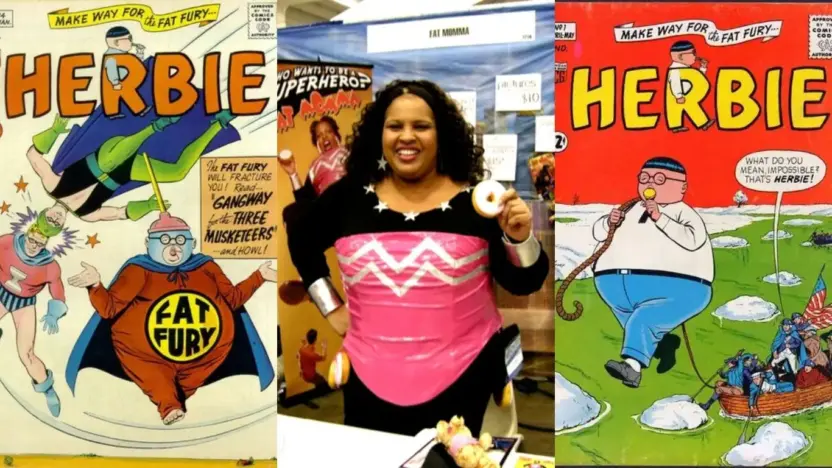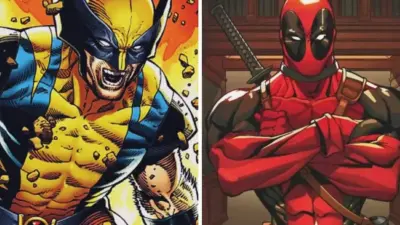In a world where comic book heroes often fit a specific physical mold—muscular, slim, and overwhelmingly fit—it’s refreshing to see characters that break the norm and represent diverse body types. Our list of the Top 10 Plus-Size Superheroes shatters the stereotype that heroes must adhere to conventional body standards to be effective and beloved. Ranging from Marvel and DC Comics to Valiant Comics and even extending to Pixar and reality TV, these larger-than-life figures showcase that bravery, intelligence, and the heart to make a difference exist in every form. By highlighting these characters, we celebrate not only body diversity but also the varied and compelling narratives that they bring to the superhero genre.
Top 10 Plus-Size Superheroes
Big Bertha (Marvel)

As a member of the Great Lakes Avengers, Big Bertha serves as an enduring symbol of body diversity in a world dominated by the overly muscular and perpetually slim. Unlike her counterparts, Bertha can alter her body mass at will, transitioning from a supermodel-thin persona to a plus-size powerhouse. This ability allows her to be incredibly strong and almost invulnerable when in her larger form.
Beyond her superpowers, Big Bertha addresses body image and self-acceptance themes, making her an important character for readers of all sizes. By occupying a space that celebrates all body types, Big Bertha contributes to a more inclusive comic book universe and delivers the essential message that heroes come in all shapes and sizes.
Faith Herbert / Zephyr (Valiant Comics)

Zephyr, is a groundbreaking figure in the world of comics, particularly for the representation of plus-size women. Hailing from Valiant Comics, Faith is a telekinetic psiot with the ability to fly, a power that defies not just gravity but also societal expectations about body size and capability. Unlike many female superheroes who conform to narrow beauty standards, Faith exudes confidence and embraces her body, proving that heroism isn’t bound by appearance.
Her character is complex, not defined solely by her body type but also by her unyielding optimism, intelligence, and strong moral compass. Her storylines often blend traditional superhero action with themes that resonate on a deeply personal level, like self-acceptance and the fight against societal prejudices. By offering readers a hero who is both relatable and aspirational, Faith challenges preconceived notions about what superheroes should look like and who they can be.
Bouncing Boy (DC Comics)

In the diverse universe of DC Comics, Bouncing Boy stands out as a unique figure embracing an unconventional physique. As a member of the Legion of Super-Heroes, a futuristic team based in the 30th and 31st centuries, Bouncing Boy has the singular ability to inflate his body and bounce around like a rubber ball. This whimsical power is an integral part of his charm, but it also defies typical superhero norms, showing that even the most extraordinary abilities can reside in bodies that diverge from the ‘ideal’ athletic build.
Bouncing Boy, whose real name is Chuck Taine, offers a light-hearted counterpoint to many of his more serious comrades, yet he is no less a hero for it. Over the years, he has demonstrated not just courage but also keen tactical skills and leadership qualities, even serving as the Legion’s leader in certain story arcs.
Mr. Incredible (Pixar)

Though not a comic book hero in the traditional sense, he has made a significant impact on broader superhero culture. Bob Parr, his alter ego, isn’t just a man with super-strength; he’s a middle-aged father struggling with a midlife crisis and the challenges of parenting. His character development is often framed around his body’s transformation—from his younger, fit self to a more plus-sized, dad-bod version.
In both “The Incredibles” and “Incredibles 2,” Mr. Incredible’s larger physique doesn’t deter him from fighting villains and saving the day. His size is presented without mockery or limitation, emphasizing that heroism isn’t about a specific body type but about courage, intelligence, and a commitment to justice. By portraying a superhero who is both powerful and visibly plus-size, Mr. Incredible challenges traditional body norms and adds a layer of relatability that resonates with audiences.
Etta Candy (DC Comics)

Candy is a character who has undergone various iterations since her debut in DC Comics, but she is often portrayed as a plus-size woman and a close ally to Wonder Woman. While not a traditional superhero with powers, Etta is a hero in her own right—demonstrating courage, wit, and unwavering loyalty. Serving as a military officer or intelligence agent in many storylines, she takes an active role in combat and espionage activities, challenging the notion that only those with superpowers or athletic physiques can be heroic.
In modern interpretations, Etta is seen as a body-positive figure who embraces her size without shame, serving as an empowering example of self-acceptance and confidence. Whether she’s leading a mission or offering moral support to her friends, Etta adds depth and complexity to a genre often criticized for its lack of diverse female representation.
Volstagg (Marvel)

Often seen indulging in feasts and sharing tales of questionable veracity, Volstagg may initially come off as comic relief. However, his size and appetite belie a formidable warrior and a heart of gold. He’s fought bravely alongside Thor and his comrades Fandral and Hogun in countless battles, proving that courage and heroism are qualities that come in all shapes and sizes.
Volstagg brings a sense of body diversity to the largely fit and muscular Asgardian landscape. His character serves to challenge traditional superhero aesthetics, showing that heroism isn’t confined to those with chiseled abs or bulging muscles. In addition to his battlefield prowess, Volstagg is a loving father and loyal friend, adding emotional depth to his character and further contributing to his heroism.
The Blimp (Underground Comix)

Next is “The Blimp”, a satirical character hailing from “The Fabulous Furry Freak Brothers,” an underground comic series created by Gilbert Shelton. The Blimp is often portrayed as slow-moving but invulnerable, a unique take on the superhero archetype. Unlike many heroes who derive their powers from speed or agility, The Blimp’s power stems from his size and resistance to harm, which adds an unconventional twist to the superhero formula.
Because he originates from underground comix, The Blimp serves as a critique of mainstream superhero tropes, especially those related to physique and athleticism. His character serves to question the stereotypical notion that heroes must conform to a specific body type to be effective or admirable. While not considered a mainstream figure, The Blimp nonetheless contributes to the discourse on body diversity within the genre.
The Fat Fury (AC Comics)

Also known as Herbie Popnecker, is a character from AC Comics who offers a comedic yet poignant take on the superhero genre. Dressed in a plump, striped suit with a plunger hat, he may not look like your standard hero, but he packs a surprising punch. The Fat Fury derives his powers from magical lollipops, which enable him to fly, travel through time, and perform a myriad of other fantastical feats.
While his characterization is largely comedic, The Fat Fury’s inclusion in the superhero canon serves as a rebuttal to the common body stereotypes found within the genre. His very name, “The Fat Fury,” embraces his body size while attaching it to the concept of “fury,” implying power, vigor, and action—qualities that plus-size characters are often denied in mainstream narratives.
Woozy Winks (DC Comics)

Winks is an enduring character in the DC Comics universe, best known as the sidekick to Plastic Man. Often portrayed as plus-sized and more than a little clumsy, Woozy turns these traits into assets rather than liabilities. His uncanny ability to stumble into fortuitous situations has been a unique, if somewhat unorthodox, approach to problem-solving and crime-fighting.
Woozy’s body size, far from being a hindrance, is treated as just another aspect of his character. This is a refreshing stance in a genre that often equates physical fitness with heroism and moral worth. While he may provide comic relief, Woozy is more than just a punchline; he’s a fully realized character who contributes meaningfully to his partnership with Plastic Man.
Fat Momma (Reality TV)

Momma, born Nell Wilson, gained recognition on the reality TV show “Who Wants to Be a Superhero?” produced by Stan Lee. Though she did not originate from comic books, Fat Momma’s presence on mainstream television opened up important conversations about body diversity and representation within the superhero genre. Portraying herself as a superhero who uses her size as an asset rather than a limitation, Fat Momma challenges societal norms that equate slimness with heroism and success.
Armed with a doughnut-shaped utility belt and an unapologetic love for her body, Fat Momma became an icon for body positivity and self-acceptance. Her superpowers, like the ability to grow twice her size, turn her body into a source of empowerment. This unique twist on traditional superhero abilities transforms what society often perceives as a disadvantage into a heroic strength.
Also Read: Deadpool or Wolverine: Who Is More Powerful?



